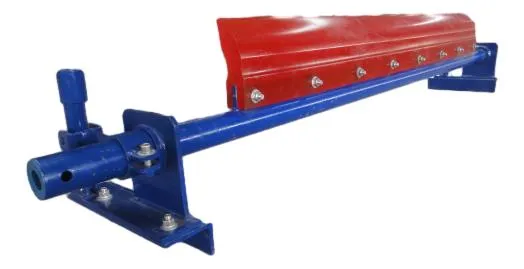 Afrikaans
Afrikaans  Albanian
Albanian  Amharic
Amharic  Arabic
Arabic  Armenian
Armenian  Azerbaijani
Azerbaijani  Basque
Basque  Belarusian
Belarusian  Bengali
Bengali  Bosnian
Bosnian  Bulgarian
Bulgarian  Catalan
Catalan  Cebuano
Cebuano  Corsican
Corsican  Croatian
Croatian  Czech
Czech  Danish
Danish  Dutch
Dutch  English
English  Esperanto
Esperanto  Estonian
Estonian  Finnish
Finnish  French
French  Frisian
Frisian  Galician
Galician  Georgian
Georgian  German
German  Greek
Greek  Gujarati
Gujarati  Haitian Creole
Haitian Creole  hausa
hausa  hawaiian
hawaiian  Hebrew
Hebrew  Hindi
Hindi  Miao
Miao  Hungarian
Hungarian  Icelandic
Icelandic  igbo
igbo  Indonesian
Indonesian  irish
irish  Italian
Italian  Japanese
Japanese  Javanese
Javanese  Kannada
Kannada  kazakh
kazakh  Khmer
Khmer  Rwandese
Rwandese  Korean
Korean  Kurdish
Kurdish  Kyrgyz
Kyrgyz  Lao
Lao  Latin
Latin  Latvian
Latvian  Lithuanian
Lithuanian  Luxembourgish
Luxembourgish  Macedonian
Macedonian  Malgashi
Malgashi  Malay
Malay  Malayalam
Malayalam  Maltese
Maltese  Maori
Maori  Marathi
Marathi  Mongolian
Mongolian  Myanmar
Myanmar  Nepali
Nepali  Norwegian
Norwegian  Norwegian
Norwegian  Occitan
Occitan  Pashto
Pashto  Persian
Persian  Polish
Polish  Portuguese
Portuguese  Punjabi
Punjabi  Romanian
Romanian  Russian
Russian  Samoan
Samoan  Scottish Gaelic
Scottish Gaelic  Serbian
Serbian  Sesotho
Sesotho  Shona
Shona  Sindhi
Sindhi  Sinhala
Sinhala  Slovak
Slovak  Slovenian
Slovenian  Somali
Somali  Spanish
Spanish  Sundanese
Sundanese  Swahili
Swahili  Swedish
Swedish  Tagalog
Tagalog  Tajik
Tajik  Tamil
Tamil  Tatar
Tatar  Telugu
Telugu  Thai
Thai  Turkish
Turkish  Turkmen
Turkmen  Ukrainian
Ukrainian  Urdu
Urdu  Uighur
Uighur  Uzbek
Uzbek  Vietnamese
Vietnamese  Welsh
Welsh  Bantu
Bantu  Yiddish
Yiddish  Yoruba
Yoruba  Zulu
Zulu Understanding the Importance of Conveyor Idler Pulleys in Material Handling Systems
Understanding Conveyor Idler Pulleys Essential Components of Efficient Material Handling Systems
Conveyor systems play a critical role in various industries, including manufacturing, mining, and logistics. Among the many components that contribute to the effective operation of these systems, conveyor idler pulleys are particularly vital. These pulleys provide support and guidance for the conveyor belt, ensuring smooth material handling and contributing to the overall efficiency of the system. This article aims to explore the importance, types, and maintenance of conveyor idler pulleys.
What are Conveyor Idler Pulleys?
Conveyor idler pulleys, also known simply as idler pulleys or idlers, are components that support the return side of a conveyor belt. They are essential for maintaining the tension and alignment of the belt, which is crucial for optimal system performance. Unlike powered pulleys that drive the conveyor belt, idler pulleys are passive components that assist in the movement of the belt by providing support and helping to manage its weight.
Importance of Idler Pulleys
The significance of idler pulleys in conveyor systems cannot be overstated. Here are several key points that highlight their importance
1. Support and Alignment Idler pulleys help keep the conveyor belt aligned and supported. Incorrect alignment can lead to belt wear and tear, increased maintenance costs, and ultimately, system failure.
2. Load Distribution These pulleys help in evenly distributing the weight of the material being transported, which reduces stress on the conveyor belt and prolongs its lifespan.
3. Reducing Friction Well-designed idler pulleys reduce friction between the belt and the pulleys, which minimizes wear and improves energy efficiency. By lowering the resistance that the system experiences, idler pulleys can enhance the overall throughput of the conveyor system.
4. Cost-Effectiveness Investing in high-quality idler pulleys can lead to significant savings in maintenance and operational costs. By ensuring proper function and longevity, users can avoid frequent replacements and repairs.
Types of Idler Pulleys
Conveyor idler pulleys come in various types, each designed for specific applications
1. Flat Idlers These are the most common types and are used for standard belt configurations where the belt is supported in a flat position.
conveyor idler pulley

2. V-Return Idlers These pulleys have a V shape that helps in guiding the belt during the return journey, providing additional support and stability.
3. Roller Idlers These consist of rotating rollers that minimize friction and resistance, making them ideal for heavy-duty applications where efficiency is paramount.
4. Impact Idlers Designed to absorb the impact of heavy loads, these idlers feature a robust construction that protects the conveyor system during the loading process.
5. Training Idlers These assist in keeping the conveyor belt centered and aligned. They are often adjustable, allowing for fine-tuning of the belt's position.
Maintenance of Idler Pulleys
To ensure the longevity and effectiveness of conveyor idler pulleys, regular maintenance is crucial. Here are some best practices for maintaining these components
1. Regular Inspections Frequent inspections can help identify wear and damage before they escalate into more significant issues. Looking for signs of wear on the pulleys, misalignment, or unusual noise can indicate potential problems.
2. Lubrication Keeping the moving parts of the idler pulleys lubricated can reduce friction and prevent wear. It is essential to use the correct type of lubricant as specified by the manufacturer.
3. Cleaning Dust, debris, and material buildup can affect the performance of idler pulleys. Maintaining a clean environment around the conveyor can help prevent such accumulations.
4. Replacement When wear and damage are identified, timely replacement of idler pulleys is essential to prevent further issues and maintain system efficiency.
Conclusion
Conveyor idler pulleys may seem like small components within a broader system, but their importance is significant. They contribute to the smooth operation, efficiency, and longevity of conveyor systems. Understanding their types, functions, and maintenance can lead to more effective material handling solutions that benefit various industrial applications. By prioritizing the care of these vital components, businesses can enhance their operational efficiency and reduce downtime, ultimately boosting their bottom line.
-
Revolutionizing Conveyor Reliability with Advanced Rubber Lagging PulleysNewsJul.22,2025
-
Powering Precision and Durability with Expert Manufacturers of Conveyor ComponentsNewsJul.22,2025
-
Optimizing Conveyor Systems with Advanced Conveyor AccessoriesNewsJul.22,2025
-
Maximize Conveyor Efficiency with Quality Conveyor Idler PulleysNewsJul.22,2025
-
Future-Proof Your Conveyor System with High-Performance Polyurethane RollerNewsJul.22,2025
-
Driving Efficiency Forward with Quality Idlers and RollersNewsJul.22,2025





























